2022: The stories behind the year’s best news pictures
Reuters photographers witnessed 2022’s most important events, from the horrors of war in Ukraine and other armed conflicts to unprecedented natural disasters and from the flight of refugees and migrants to protests around the globe

Reuters were in Ukraine’s Bucha after Russian forces pulled out and saw bodies lying in the street. They were in the flood waters of Florida to capture the devastation wrought by Hurricane Ian. And they were in the streets of the South Korean capital Seoul as the emergency services recovered the dead after a crowd crush.
Others photographed the parched landscapes of drought-hit Somalia and the desperation of those who live there.
They also captured the joy as anti-corruption protesters ran through the presidential palace in Sri Lanka’s commercial capital Colombo and as Britons celebrated the Platinum Jubilee of Queen Elizabeth. Three months later, they captured the extraordinary pomp and ceremony of her funeral, and the outpouring of grief of mourners.
Below is a selection of some exceptional Reuters pictures taken in 2022 along with the stories behind the shots, directly from the photographers who took them.
Peter Nicholls: Dover, 30 October
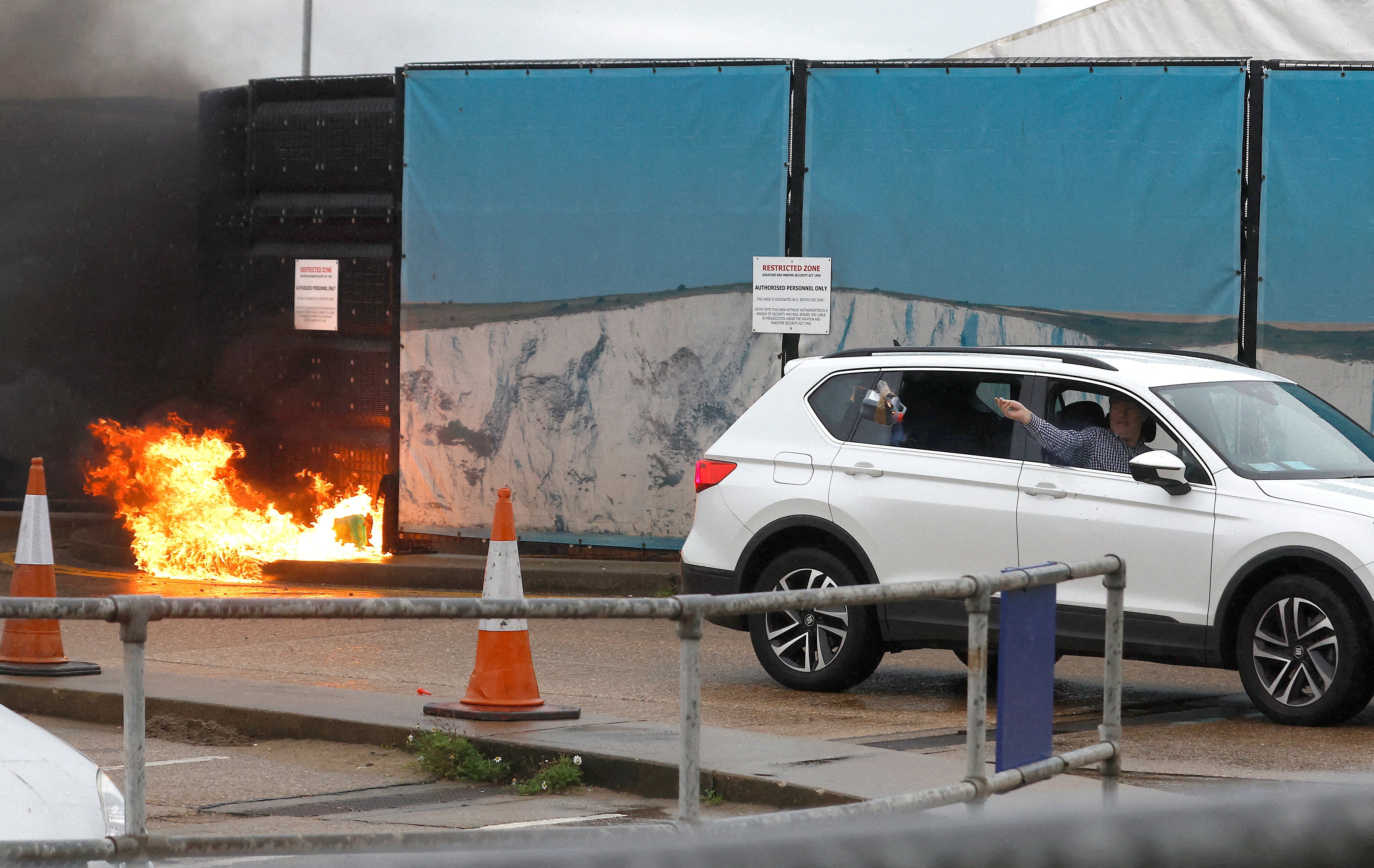
“I was in Dover covering a story, in conjunction with the Reuters Paris bureau, on tensions between Britain and France over who should handle the thousands of irregular migrants crossing the English Channel each year.
As I drove away from the UK Border Force migrant processing facility, I heard a loud bang, which I initially thought was a bird scaring device. I turned my car around and saw the outer gates of the facility on fire and Border Force staff retreating as fireworks went off outside.
I spotted a man in a checked shirt sliding plastic canisters of flammable liquid, attached to lit fireworks, along the ground towards the Border Force staff. He was running around with his arms in the air and shouting.
At least one of the canisters failed to catch fire. The attacker then got into a white sports utility vehicle and threw what appeared to be another improvised explosive device from the car window towards the Border Force officials. He then sped away, driving the wrong way down the road. Military personnel also appeared from the centre to help extinguish the fire.
Seconds later, I heard more explosions and saw smoke coming from a nearby petrol station. I drove to this location and found the attacker there, dead in his car. The man’s head and torso were visible from the opened rear window behind the driver’s seat. One end of an orange strap had been tied around his neck and was pulled taut, the other, anchored to a metal pole.
The police arrived at the same time and later covered the car and his body with a tarpaulin. The whole chaotic attack and subsequent death of the assailant happened within five minutes.”
Jose Luis Gonzalez: Ciudad Juarez, 17 October
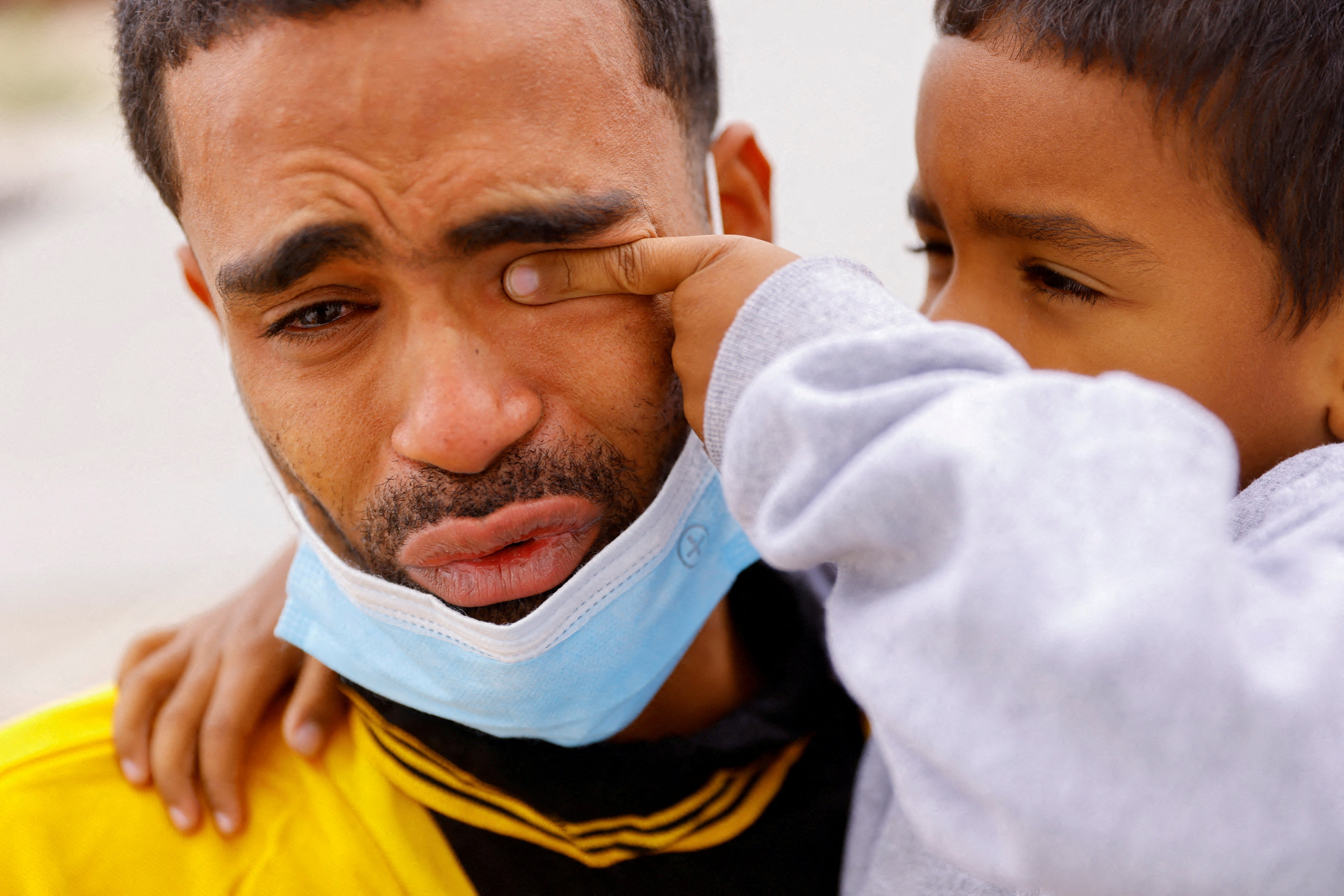
“Five days had passed since the United States began expelling asylum seekers from Venezuela to Mexico. That afternoon I decided to continue documenting the expulsions at the U.S./Mexican border. I went to the international bridge and followed the migrants to the National Migration Institute of Mexico where I saw many sad people with their little children.
Among them was Franklin Pajaro, the Venezuelan in my photograph. I saw he was carrying his 4-year-old son Saul on his shoulders, so I approached him to do a video interview and asked him how he felt.
‘We have no money, we have nothing. We come from Venezuela, we crossed the jungle, we have been crossing all of Central America,’ Pajaro said. He added his poor relatives had sacrificed what little money they had been able to collect to help them achieve their dream of reaching the United States, and eventually helping them in turn.
As he began to remember everything he had gone through, Pajaro began to cry and his son, who listened while he carried him in his arms, wiped away his tears. At that moment I decided to stop the interview and take the photograph because it moved me how, in his innocence, the little boy decided to comfort his father.
Currently there are hundreds of Venezuelans stranded on the border looking for a better future for their families.”
Ricardo Moraes: Rio de Janeiro, 21 July
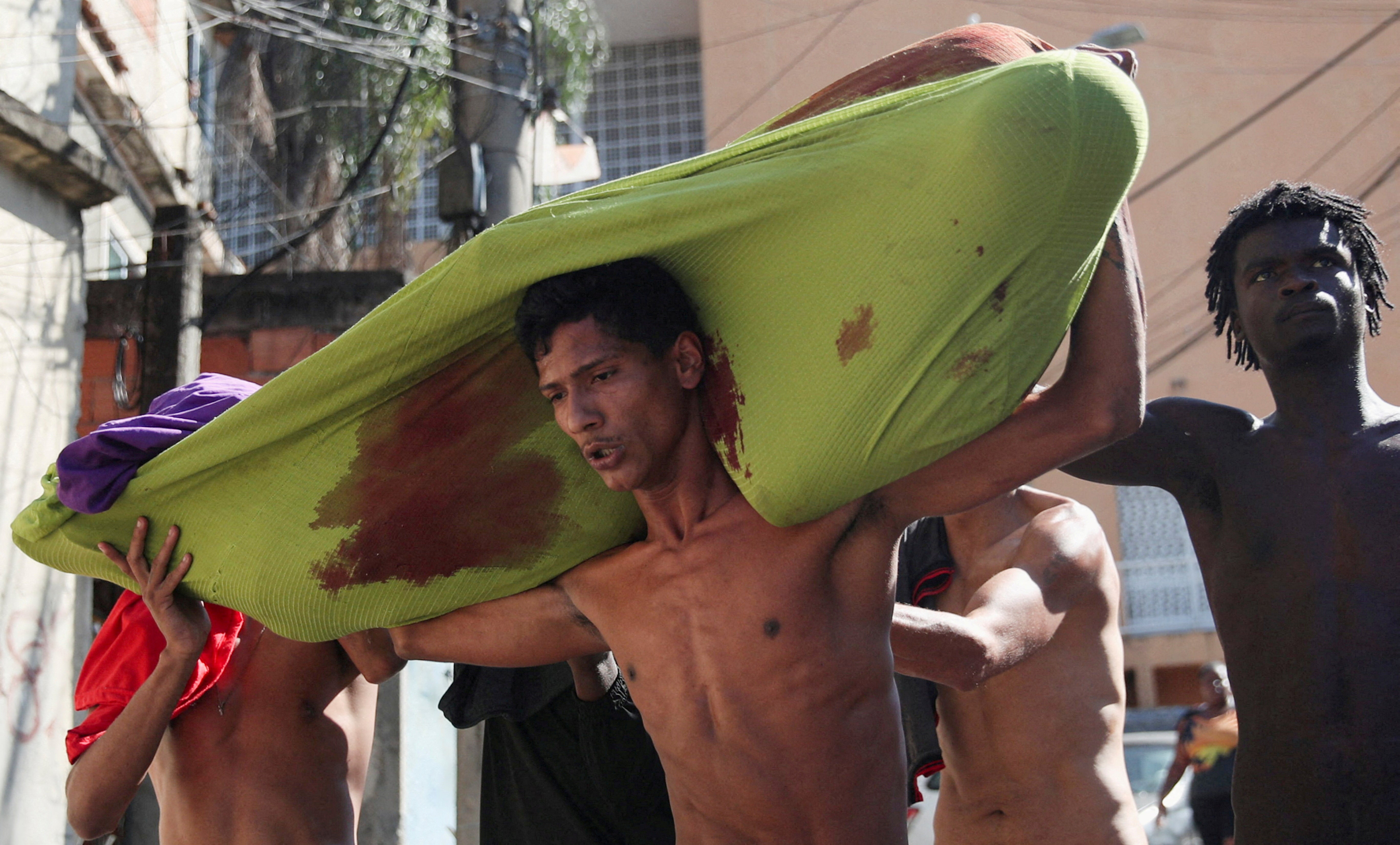
“When I arrived at Rio de Janeiro’s Alemao slum complex to cover a police raid against a drug gang, I could feel the panic as I walked the empty streets. The silence was broken by shouts for help from people trying to rescue those killed or wounded during the operation.
Eighteen people were killed during the raid, according to police: one police officer, 16 alleged gang members and a female bystander.
Friends of those killed were determined to take their bodies out of the alleys and deliver them to their relatives or find someone to drive their bodies to the hospital. That way their families could mourn and say goodbye. This task was not simple, they didn’t have any equipment for carrying bodies and had to improvise. It was all about giving dignity to the dead.
When I saw a man carrying a body on his back, and I saw his effort, his expression, and also the form of the body and the blood on his shoulders, I knew that a single shot could convey how tough life is for Alemao’s residents.
The slums are home to tens of thousands of Rio de Janeiro’s poor, working-class people. Police said the operation involved around 400 officers, four aircraft and 10 armoured vehicles. Photographing Rio’s drug war was my first assignment after coming back from 3 weeks covering the Ukraine war. I saw more dead bodies at a residential neighbourhood in my hometown then I saw in the war.”
Feisal Omar: Gedo Region, 26 May

“I was in the town of Dollow in Somalia’s Gedo region, covering East Africa’s drought. One morning I went to the countryside, 50 kilometres outside Dollow. I reached a severely hit area where all the trees had dried up and under them were the skeletons and carcasses of animals that had searched for shade. They found no shade, no leaves and no grass and died under those trees.
From a distance I saw a Somali woman standing in the scorching heat. I walked towards her, wiping the pouring sweat off my head and face. I photographed her and asked her why she was standing there. She said her name was Habiba Bile and that all her 200 goats had perished. ‘This dead one was the last animal,’ she said. She was grieving, starving.
Her situation broke my heart. But I could not help. She was in a hell on earth - a hell I could not stand during the three days I spent there. The temperature was over 40 degrees Celsius and there was no shade. I felt sick and had a headache from the heat.
Bile said she did not know where to go and she was afraid her children would die of hunger and thirst. I grieved with her. My eyes filled with tears as I interviewed her.”
Jorge Duenes: Tijuana, 17 January

“I received a message on my phone informing me that a shooting had been reported in front of fellow photographer Margarito Martinez Esquivel’s house. I grabbed my backpack and headed to his neighbourhood.”
He worked for several national and international news outlets covering gang crime and violence in the city of Tijuana.
“On the way it was confirmed that Margarito had been attacked. From that moment on, my feelings changed from adrenaline to uncertainty, disbelief and worry, but I was trying to concentrate on the map, showing me the way to his street. When I saw that it had already been closed by police, I took an alternative route. I saw from a distance that family members were hugging and crying, which somehow confirmed to me, without being able to see, that Margarito was still there.
I took the first images of the relatives from a side street, then I crossed a courtyard, climbed some stairs and went through a walkway that led to another street, where I saw the car and Margarito.
Amidst the sobs of the family members and feeling dismayed, I took some images, thinking that the event had to be recorded and condemned. But I took the utmost care not to show his face or blood. I wanted everybody to remember him the way I do, as one of the funniest, kindest and wittiest people I used to meet on every big news story because of our work as photographers.”
Dinuka Liyanawatte: Colombo, 9 July

“On July 9, after months of demonstrations against state corruption, an unprecedented number of Sri Lankan protesters had flocked to Colombo. I saw a huge number of people breaking down barriers set up by the army across the road leading to the president’s house. The police and army started firing tear gas and clashes went on for about five hours. Eventually the protesters got through and stormed the presidential palace, demanding the resignation of President Gotabaya Rajapaksa, who later fled the country.
This photo shows the crowning moment of the people’s struggle to end what they saw as an era of oppression, corruption and violence. They demanded state accountability and transparency by occupying the highest symbol of state leadership – the official residence of the president.
The grand staircase was an iconic symbol of the house and was packed with protesters. The architecture of the room drew me to a place where I could see the crowds ascending the stairs – and I knew this was the best angle for the lens I had. As I took the photo, I felt like I’d taken a picture that would be published around the world. Afterwards I witnessed people swimming in the president’s pool and enjoying spaces never seen before by the public.”
Hannah McKay: London, 2 June

“The photograph of the Queen with members of the royal family on the balcony of Buckingham Palace was taken during a flypast by military aircraft as part of celebrations for her Platinum Jubilee. It was one of her final public appearances.
I had an accredited position, with approximately 20 other photographers on the statue outside Buckingham Palace. The balcony was very far away, so I knew I needed to use a long lens to be able to capture the Queen. I didn’t want to miss any ‘moments’ between swapping lenses so I set up a 400mm lens on a tripod and triggered it remotely from the 800mm lens, this allowed me to ensure I also had wider shots of the family.
As it happened, the focal point of the moment wasn’t so much the Queen but her great-grandson, Prince Louis. Whilst I was shooting, I could make out Louis was gesturing, but it wasn’t until afterwards when I filed my pictures that I realised quite how humorous the four-year-old looked by putting his hands over his ears because of the planes. He became the surprise star of the show.
This more relaxed moment of the royal family is something we don’t see very often. Children bring unpredictability and I think the public were able to relate to them as a family. Prince Harry had a reputation of being a jokester as a child and there was a lot of talk about Prince Louis following in his footsteps.”
Henry Nicholls: London, 15 October
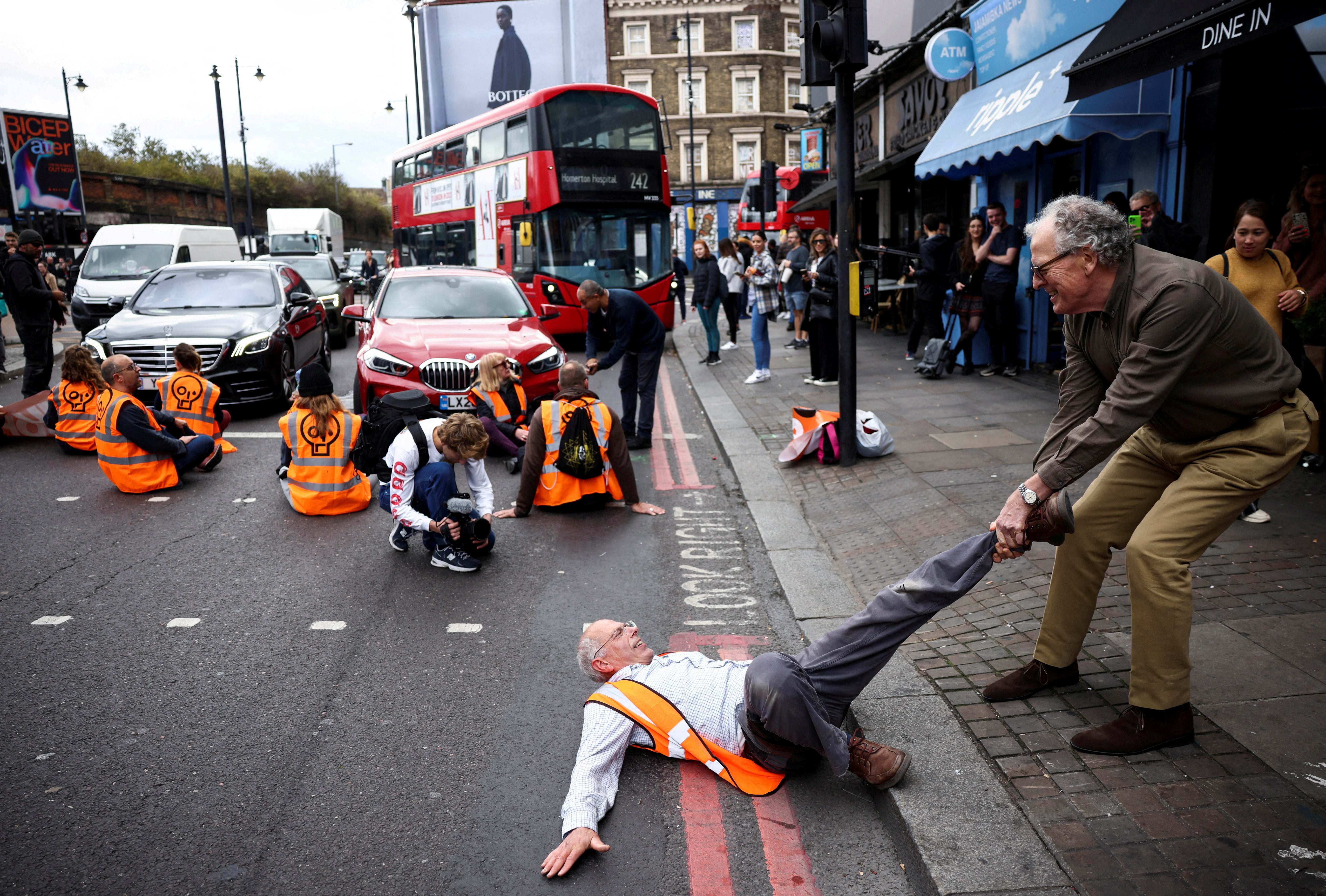
“The image was taken during one of the Just Stop Oil protests that occurred during October in London, aiming to pressure governments into halting exploration of new oil. The group created human roadblocks at busy points, causing mass disruption.
Their actions had sparked a polarising debate, with the public generally supportive of measures to address climate change but often viewing the targeting of regular people as the wrong approach. Just Stop Oil had become infamous in the UK.
At a very busy intersection near Liverpool Street station in the City of London, around two dozen activists appeared stealthily, before donning their trademark orange vests and banners, promptly sitting down across four pedestrian crossings, with some glueing their hands to the tarmac. They brought the traffic to a halt. Immediately, drivers and passersby knew what was happening, mostly angrily confronting the protesters. Impatient drivers began to drag protesters one by one onto the pavement. Undeterred, the protesters would crawl straight back.
Many people were very angry, some were understanding of the group but frustrated, while a few saw the funny side, like the two in this image. The man was determined to remove the protester but upon making eye contact, both froze for a second, smiling at each other, before carrying on.
It was a challenge to know where, when and who to photograph, but I was pleased with this image, with the two somewhat separated from the rest of the chaos, in their own brief moment.”
Gleb Garanich: Kyiv, 25 February

“It was the second day of Russia’s full-scale invasion of Ukraine and Russian troops were closing in on Kyiv. I received information that in one of the districts of Kyiv there was a battle with Russian military or saboteurs, and we went there to check. The streets of Kyiv were empty, there was no clear information about what was happening, everyone was waiting for the capital to be stormed.
As we were returning to the office, I saw how young servicemen of the Ukrainian National Guard had taken up positions on the bridge in front of the centre of Kyiv and I managed to take a few pictures through the window of the car. It was very strange to see young servicemen, almost children, with weapons lying on the pavement, and seeing determination in their faces. I was struck by this view.”
Zohra Bensemra: Bucha, 2 April
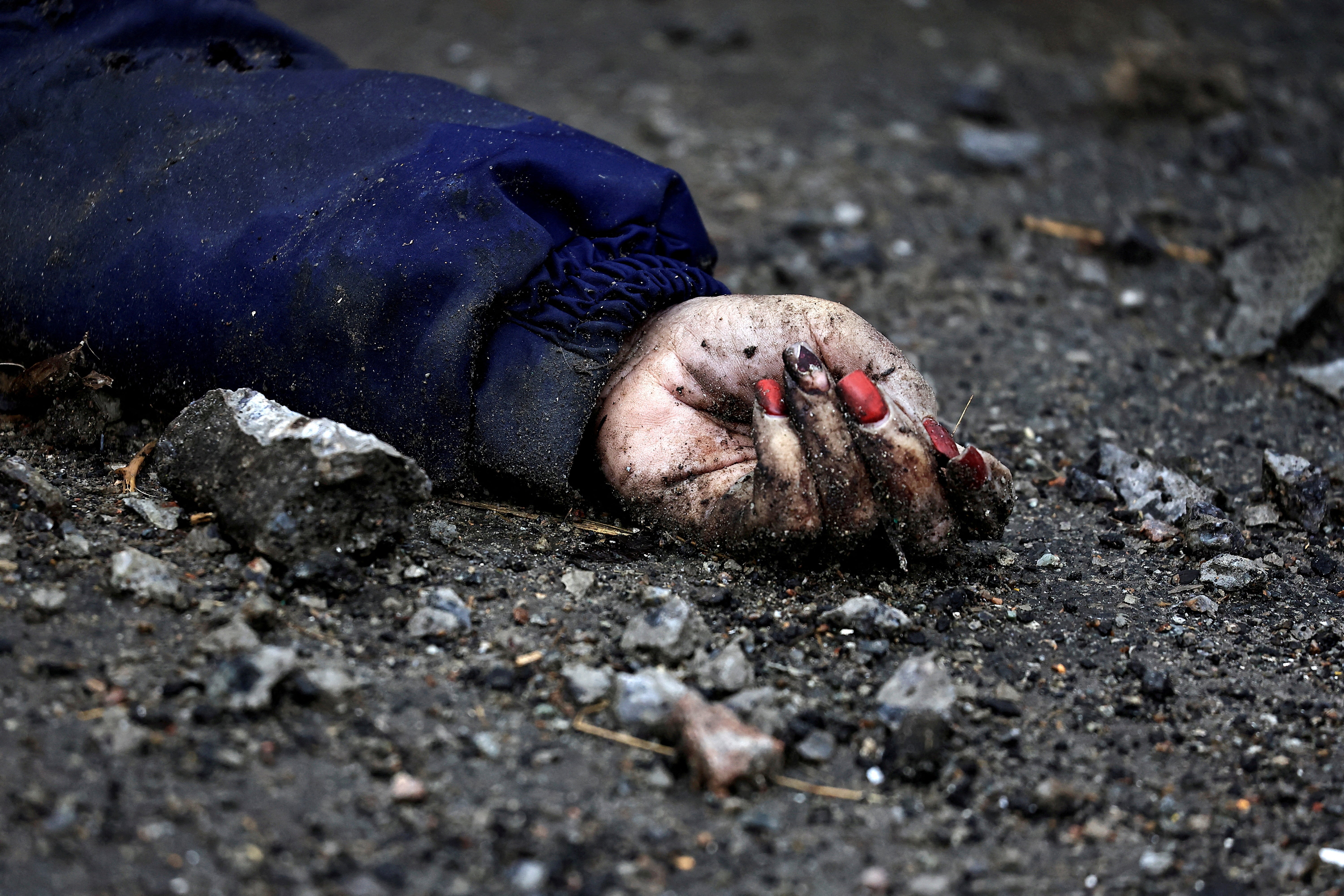
“We headed to Bucha, a suburb just outside the Ukrainian capital Kyiv, behind a humanitarian convoy, when we heard the Russians had pulled out. I had expected to find destroyed military vehicles and dead soldiers. I had no idea of the horrors I would witness. I had no idea we would find the bodies of civilians lying out in the streets.
I was looking around when someone approached me to say there was a churchyard where people had been buried and you could see body parts sticking out of the sand. Another person mentioned that there was a street full of bodies. We suddenly found ourselves walking down this street, which was scattered with civilian bodies, many bodies, everywhere.
I was shaking. I couldn’t believe it. The more we walked, the more bodies we discovered. Each body represented a person who must have had a family that was waiting for him or her to get back home. All the civilian bodies were men except one. I was drawn to her hands and her nicely polished nails. I knew how important it was to show her, but I avoided photographing her face - It was too graphic.
She was next to her bicycle. I shot a close-up photo of her hand, a heart design on one of her nails gave me an idea of what she was like – a woman who loves beauty and life. I later learned that her daughter, Olha Shchyruk, confirmed the death of her mother, Iryna Filkina, through my photo.”
Mussa Qawasma: Hebron, 9 February

“This picture was taken during clashes between Palestinians and Israeli troops in Hebron, in the occupied West Bank, after the killing of 3 Palestinian gunmen in Nablus a day before by Israeli forces. We were expecting clashes, so we were prepared and waited in the area. I had my safety equipment and my camera. I started to take pictures. It started with a few teenagers, aged 14-17, throwing stones. The Israeli soldiers fired rubber bullets at these teenagers.
The Palestinian woman in the picture was going home and the soldiers were in her way. She stood in front of an Israeli soldier who was shooting rubber bullets, arguing with him for a while and preventing him from shooting at the boys. She was shouting that the stone throwers were just kids and telling the soldier not to shoot.
Then an Israeli officer there started to shout at the Palestinian woman to move away, as he pointed his gun at her, or he would arrest her. More stone throwers came and the situation became more intense and dangerous. The woman left.
There was tear gas in the air and rubber bullets and stones flying everywhere, and I thought she may get injured. That woman stood in the face of danger, worried about teenagers who choose to clash with Israeli forces.”
Alkis Konstantinidis: Kharkiv, 18 April

“One morning in Kharkiv I heard of another missile attack. I arrived within minutes at a Soviet-era apartment complex and as we drove in, I saw a woman exiting one of the buildings with the most terrified expression I have ever seen. The woman was Yana Bachek.
Her father, 79-year-old Victor Gubarev, had been killed near his home by a shell fragment while out buying bread. Minutes after the explosion, Yana rushed to him and cried over his body, with her mother and partner next to her. The ambulance crew had to hold her back as they carried her father’s body away.
Elizabeth Frantz: Delaware, 18 June

“Coverage of US president Joe Biden’s bike rides in Rehoboth Beach, Delaware, is routine. The press gets into position and waits for the president and his entourage to pass by. I set a slow shutter speed on my wide-angle camera to attempt a fun panning effect during Biden’s final loop. But instead of riding past us, he turned off the trail and rode up to a nearby group of people.
“Everyone scrambled. As I ducked into the crowd to gain a better position, I heard a collective ‘whoa.’ Something had happened during my two-second manoeuvre. Adrenaline rushing, I pushed to the front and documented what I saw.
“I managed four frames of Biden on the ground before I lost sight of him again as a secret service agent, with two hands firmly on my waist, pulled me back as security reformed their perimeter and the president stood up. It was over. The motion blur from my camera settings had recorded more than the scene. It captured how the chaotic incident felt.
“I filed quickly. The photo went everywhere.”
Loren Elliott: Dubai, 17 January
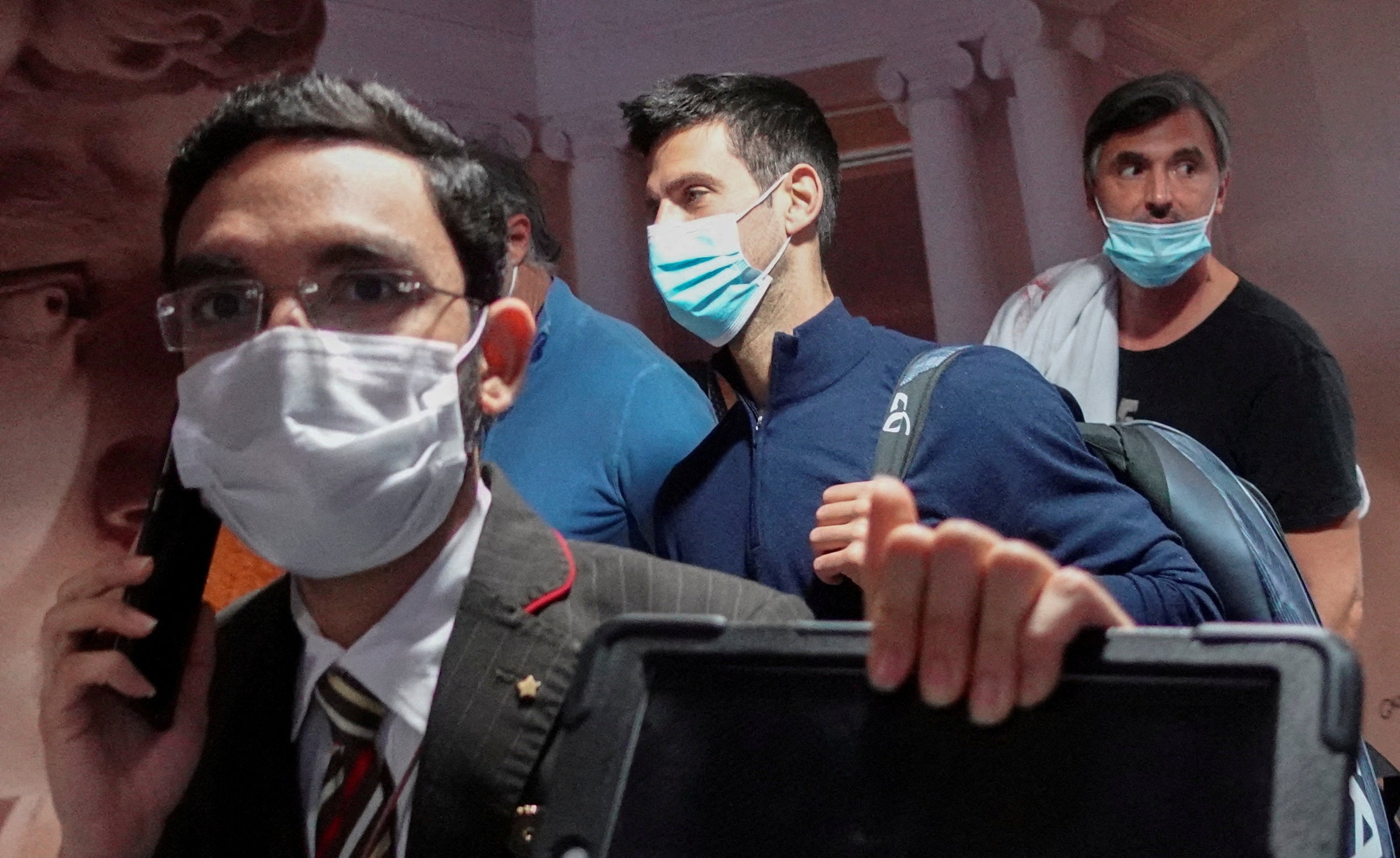
“Novak Djokovic had been issued a second deportation order by an Australian court and could no longer appeal. The Australian Open was starting the following morning, and the tournament’s biggest star was being booted out of the country on account of his COVID-19 vaccination status.
“We took a gamble and I rushed for the airport to catch a flight to Dubai which we believed Djokovic would be aboard. The gamble paid off. I found the gate and then found Djokovic in the luxury lounge surrounded by law enforcement. I photographed him being escorted to the gate.
“I’d been asked to focus on video upon landing in Dubai, so as we walked off the plane I began shooting clips of him on my phone and transmitting to our news desk. Once I felt I’d shot ample video, I pulled out a pocket camera and took the photograph above.”
Reuters
Join our commenting forum
Join thought-provoking conversations, follow other Independent readers and see their replies
Comments
Bookmark popover
Removed from bookmarks